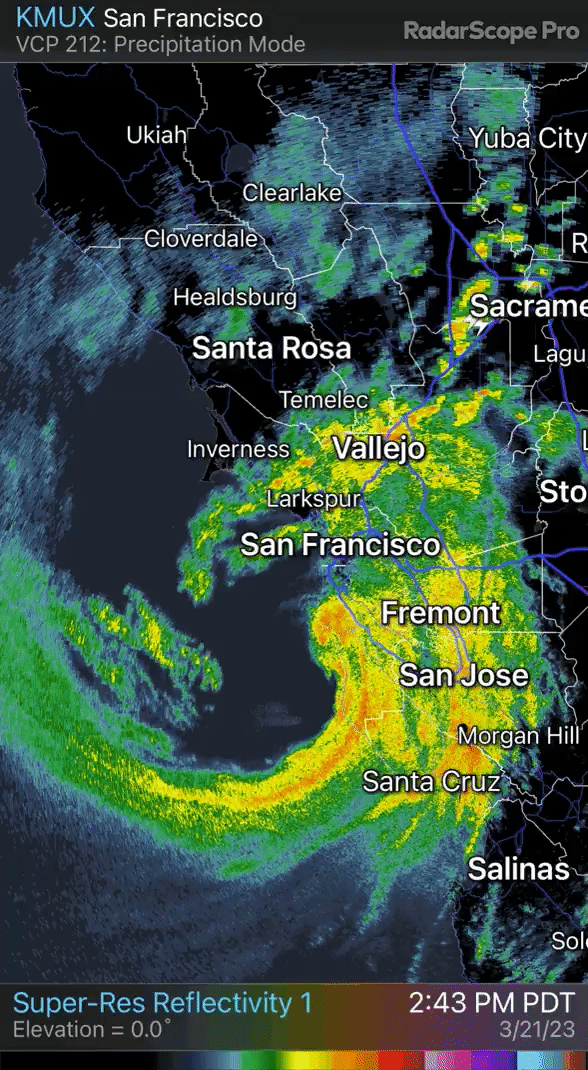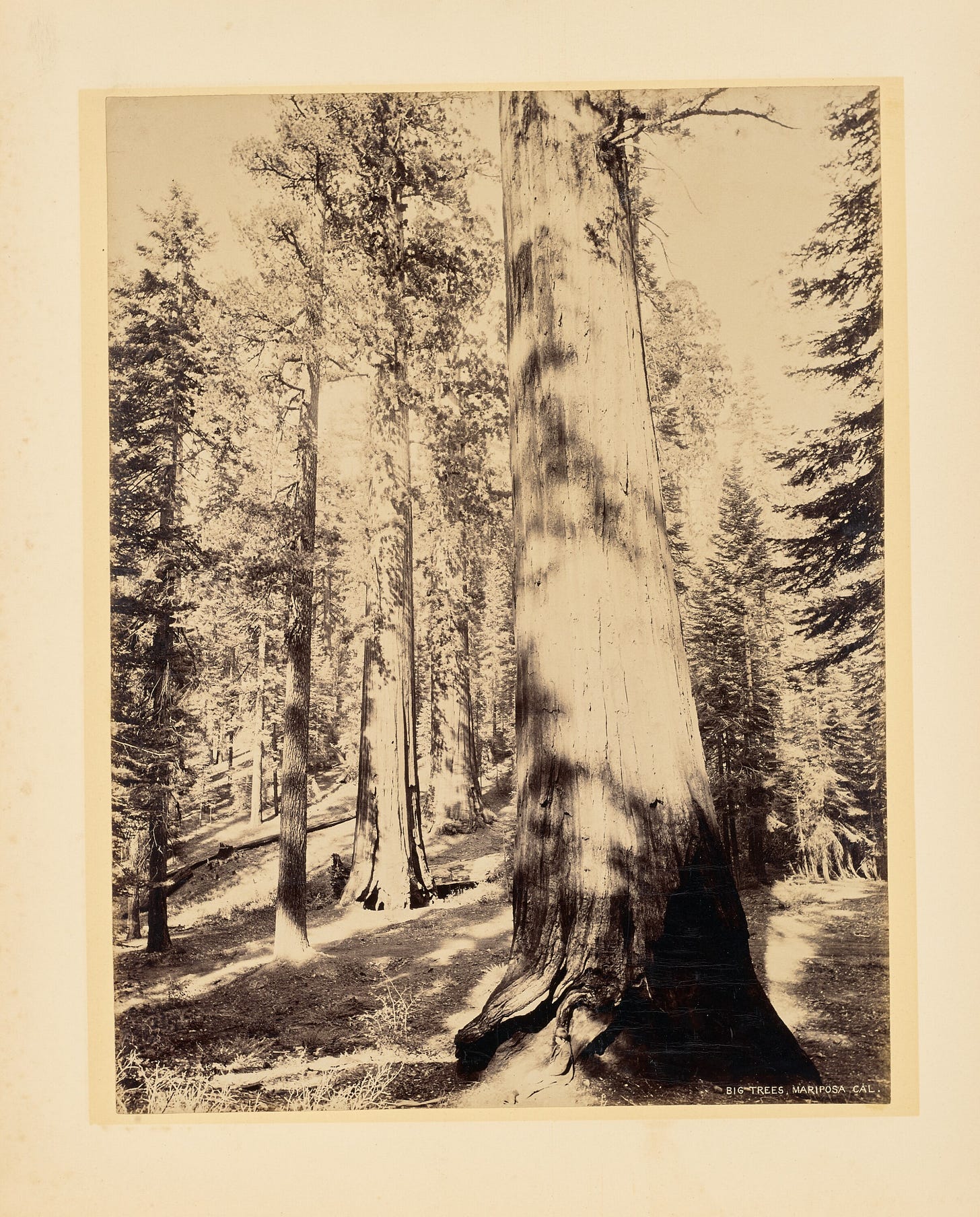Why so Much Rain Could Mean a Terrible Fire Season in California
And how California can use the moisture to its advantage
Yesterday a unique (for California) weather pattern pummeled the California coast, called the “Fujiwhara effect.” Essentially, this is two smaller weather circulations, each with an inner eye similar to that of a hurricane, merging into one. You can see a radar image by clicking the tweet below.


For the past few months, California has been seeing record amounts of rain and snow. Similarly to the state’s longer fire seasons, many area calling this extreme weather “the new normal.”
I’m not as quick to call anything a new normal, and with the ongoing mercurial effects of climate change I personally don’t think we will have the luxury of calling any weather pattern “normal” in the near-future. Recently the IPCC (the Intergovernmental Panel on Climate Change) released the second part to their sixth climate change assessment report, and it’s, well, terrible. This should come as little surprise, as many countries, including the U.S., are doing very little when it comes to climate change.
Watch this video to learn more about the report:
I am not here to engage with climate change denialism, so I won’t. The fact is that we are not doing enough, both individually and collectively, to slow climate change, and weather impacts like what California is seeing will only become more common.
But I am here to talk about what good can come of this incredibly wet winter and spring in California.
Last summer a prescribed burn in New Mexico turned into the Hermit’s Peak Fire, angering local residents. The Forest Service bore the brunt of this anger, and recently a bill banning rx burns on red flag days cleared the house in New Mexico. There are other pushes in the state to ban springtime burning entirely. Federally, some lawmakers seek to ban prescribed burning entirely. This is in line with the historical vacillation between full suppression and prescribed burning, and the reactive stance of federal and state agencies, often spurred by the public’s anger.
The research shows, clearly and unequivocally, that nearly every landscape in the United States evolved with fire, and is therefore fire adapted. Take fire away, and the land itself longs for fire as it longs for water. Fire, in many ways, works to cleanse these landscapes as water does, making way for new growth. Without fire, fuels accumulate, invasive species thrive, parasite populations explode, and ecosystems suffer, often veering towards homogeneity rather than species diversity, which increases their vulnerability.
Their health is our health.
How does this translate to California?
Many of California’s worst fire seasons have come on the heels of wet winters and springs. Rain promotes new growth, and this beautiful, green, vibrant new growth turns yellow and tinder dry in summer’s heat. By the time the Diablo and Santa Ana Winds funnel through the California mountains, all that new growth has turned into fine fuel, which easily carries fire long distances.
Not only that, but rising temperatures cause snow to melt earlier in the season, which lowers soil and plant moisture levels for longer periods of time, heightening their flammability. Many trees throughout California have died due to warming temperatures and parasites, meaning that fires could burn especially hot.
Read my interview with fire ecologist and Karuk tribal member Frank K. Lake on why fire is essential for the land, especially in California, and then hear about how Will Harling, working with the Mid Klamath Watershed Council, has spoken about working with state and tribal affiliates to get fire on the ground in California.
Although many plans to burn over the winter may have been foiled by the excessive rain, Vice President Kamala Harris just approved $197 million for wildfire resilience. Although this funding primarily focuses on the most vulnerable communities (following the “firesheds” pattern laid out by her administration last year), it’s a good sign.
Agencies like the USFS, Cal Fire, and the BLM and NPS need to be able to think on their feet and get fire on the ground as soon as windows open in the spring.
There are many nonprofits and tribal groups who have been working over the past decade towards more legally certified burn bosses, and both nonprofits and tribal groups, like the Karuk in Northern California, who have the qualifications and experience to work independently.
Federal and state agencies are not known for their flexibility, but these are, as they say, unprecedented times. Could the “new normal” be a more hands-off approach when it comes to allowing tribal groups to burn, not only for ecological but also for their own cultural purposes? Could some of this funding go to providing vehicles such as water tankers and engines to these groups?
As the rain continues in California and throughout the west, state and federal agencies need to revise their winter plans and act with flexibility in order to preemptively and safely burn these fuels. This could not only decrease fire risks for summer, but it could also regenerate the land, making way for more native species and overall ecological health.
What do you think? Tell me in the comments:
If you learned something, please consider sharing online or becoming a paying subscriber.





The grant money for this project comes from the climate bill passed by the Congress not Kamala Harris. You make it sound like she came to the state and wrote a personal check. That money as all government funded projects comes from tax payers.
Totally agree! What also frustrates me is (at least where I live) the "burn day or not" decision is based on weather quite some distance away and in an entirely different terrain and wind patterns. It's also partially based on air quality. I get that, no one wants to breathe smoke. But I'd rather breathe a little and have a healthier forest than breathe a lot of it later and have uncontrolled fire with loss of habitat, homes, and life.